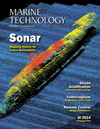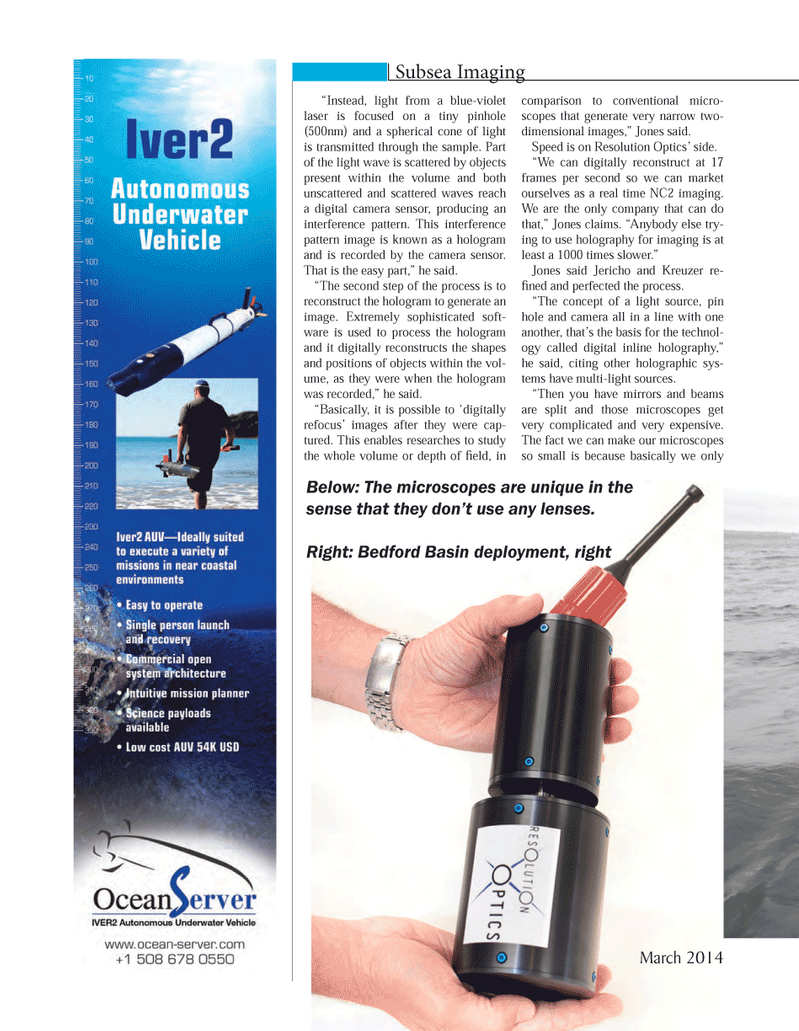
Page 68: of Marine Technology Magazine (March 2014)
Instrumentation: Measurement, Process & Analysis
Read this page in Pdf, Flash or Html5 edition of March 2014 Marine Technology Magazine
?Instead, light from a blue-violet laser is focused on a tiny pinhole (500nm) and a spherical cone of light is transmitted through the sample. Part of the light wave is scattered by objects present within the volume and both unscattered and scattered waves reach a digital camera sensor, producing an interference pattern. This interference pattern image is known as a hologram and is recorded by the camera sensor. That is the easy part,? he said. ?The second step of the process is to reconstruct the hologram to generate an image. Extremely sophisticated soft-ware is used to process the hologram and it digitally reconstructs the shapes and positions of objects within the vol- ume, as they were when the hologram was recorded,? he said. ?Basically, it is possible to ?digitally refocus? images after they were cap- tured. This enables researches to study the whole volume or depth of eld, in comparison to conventional micro- scopes that generate very narrow two- dimensional images,? Jones said. Speed is on Resolution Optics? side. ?We can digitally reconstruct at 17 frames per second so we can market ourselves as a real time NC2 imaging. We are the only company that can do that,? Jones claims. ?Anybody else try- ing to use holography for imaging is at least a 1000 times slower.? Jones said Jericho and Kreuzer re- ned and perfected the process. ?The concept of a light source, pin hole and camera all in a line with one another, that?s the basis for the technol- ogy called digital inline holography,? he said, citing other holographic sys-tems have multi-light sources. ?Then you have mirrors and beams are split and those microscopes get very complicated and very expensive. The fact we can make our microscopes so small is because basically we only Below: The microscopes are unique in the sense that they don?t use any lenses. Right: Bedford Basin deployment, right Subsea Imaging March 2014 MTR #2 (66-81).indd 68MTR #2 (66-81).indd 682/22/2014 1:56:54 PM2/22/2014 1:56:54 PM

 67
67

 69
69
